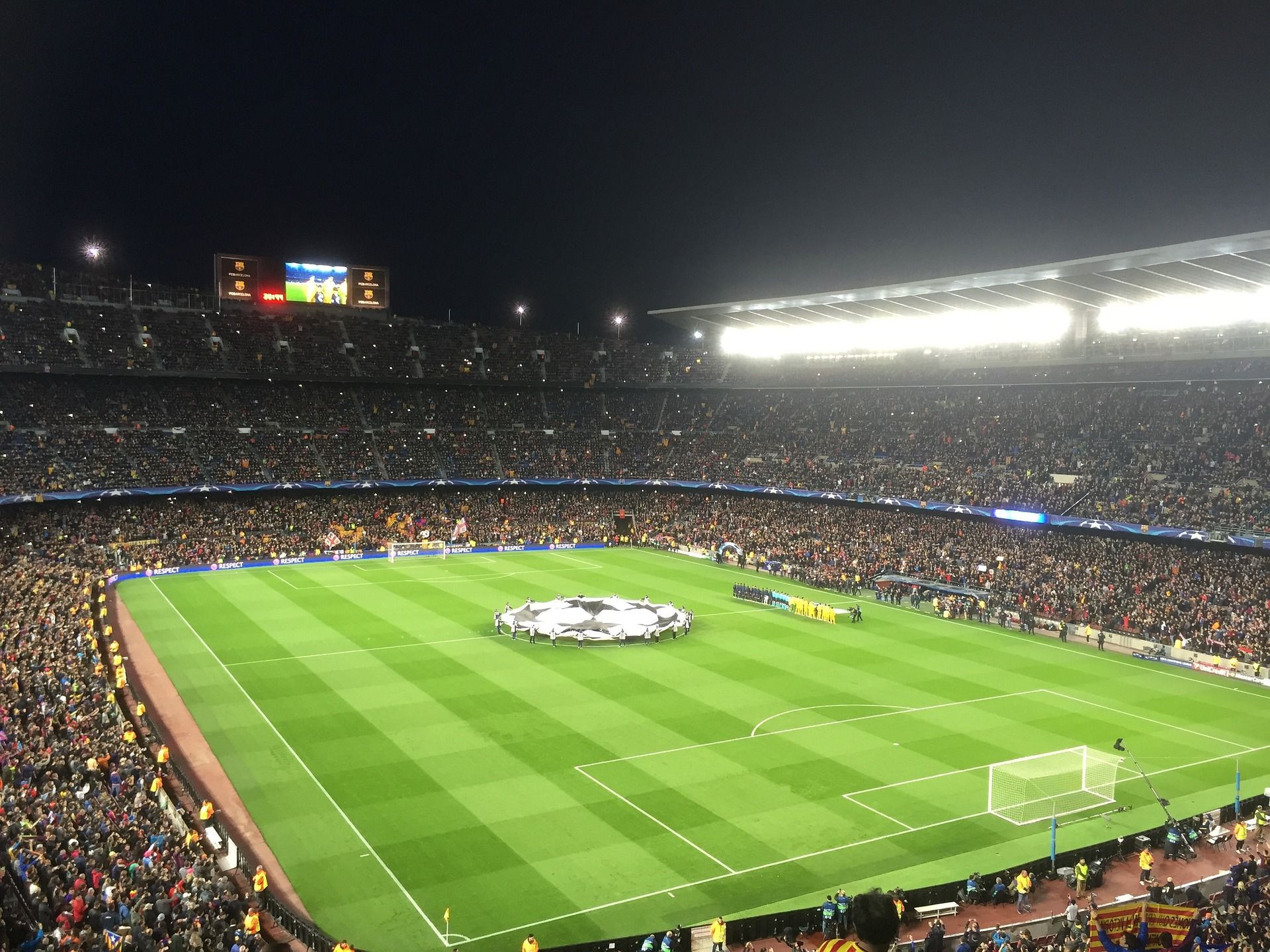UEFA Champions League: The Thrilling Journey to European Glory
The UEFA Champions League is a tournament that brings together some of the best football clubs in Europe for a thrilling journey to glory.

I. Introduction
The UEFA Champions League is an annual football competition organized by UEFA. It involves the top club teams from different European countries competing against each other to determine the best team in Europe. The tournament has a long and storied history, with its origins dating back to the 1950s. Since its inception, the competition has grown in stature and has become one of the most prestigious club tournaments in the world, attracting millions of fans and viewers from around the globe. The competition is known for its high level of competition, thrilling matches, and memorable moments. Winning the UEFA Champions League is considered the ultimate achievement for any European club team, and the tournament has produced some of the most iconic moments in football history.
The current format of the tournament is used since 1992, when the former Champions Cup, a tournament that allowed only the league champions to participate, was re-branded into the currently known UEFA Champions League.
A new format for the competition was voted to be applied starting the 2024 season. The number of teams competing will increase from 32 to 36, meaning there will now be 189 matches instead of 125, and the group stage will be replaced by a league phase — otherwise known as the “Swiss model”. Each team will be guaranteed to play eight matches in the league phase.
II. Qualification
The qualification process for the Champions League is complex and involves teams from different European countries. The number of teams that qualify from each country is determined by UEFA's coefficient ranking system, which takes into account the performance of clubs from each country in European competitions over a five-year period. The top-ranked countries get more qualifying spots, while lower-ranked countries have fewer.
Here are the ways available for teams to qualify for the competition:
- League position: The top 24 teams from the domestic leagues of UEFA's member countries qualify directly for the group stage of the Champions League. The top countries have a maximum of 4 spots for the Champions League competition.
- Champions League and Europa League winners: The winner of the previous year's Champions League and Europa League competitions automatically qualify for the group stage of the following year's Champions League.
The teams that do not qualify directly for the Group Stage of the competition, but finish on a Champions League spot in their own league, have to play three qualification rounds and a play-off. The round in which you start the tournament is decided by the country coefficients and the league position you finished the season before. The six surviving teams enter the Group Stage.
In the Champions League Qualification Rounds there are two possible paths to take, one for league champions and one for non-league champions. The teams that get knocked out during the qualification rounds of the Champions League, can continue their European adventure in the next round of qualifications for the Europa League competition.
III. Group Stage
The group stage of the UEFA Champions League is the second phase of the competition, following the qualification rounds. The format involves 32 teams being placed into eight groups of four teams each. Each team plays six matches against the other teams in its group, with three matches being played at home and three away.
The top two teams from each group advance to the knockout stage of the tournament, while the third-placed team in each group is transferred to the UEFA Europa League. The bottom-placed team is eliminated from European competition for that season.
The groups are determined by a draw, which takes place after the qualifying rounds have been completed. Teams are seeded based on their performance in their domestic leagues and in European competition over the previous few seasons. The draw ensures that no more than two teams from the same country are placed in the same group, and that teams from certain countries cannot be drawn against each other.
The group stage has produced some memorable moments in Champions League history, with famous comebacks, dramatic late goals, and shock results. It is often seen as the first major test for the top teams in Europe, as they compete against each other for a place in the knockout rounds.
IV. Knockout Stage
The UEFA Champions League knockout stage is the second phase of the competition, following the group stage. It consists of a series of two-legged ties played between the winners and runners-up of each group. The knockout stage begins with the round of 16, where the top two teams from each group are paired against each other based on their group stage performances.
The knockout ties are played over two legs, with each team playing one leg at home and one away. The team that scores the most goals over the two legs advances to the next round. In the event of a tie on aggregate goals, away goals were used as a tiebreaker, until the 2021-2022 season. Since then, in case of an equal number of goals scored after the two legs, the tie continues with extra time and penalty shootouts.
The draw for the knockout stage of the UEFA Champions League typically takes place in December after the group stage matches are completed. During the draw, the 16 teams that qualified for the knockout stage are drawn against each other to determine the matchups for the Round of 16.
There are some rules that govern the draw process, such as teams from the same country or that were in the same group during the group stage cannot be drawn against each other. Additionally, the group winners are drawn against the runners-up, with the group winners playing the first leg of the tie away from home.
Once the Round of 16 matches are completed, another draw takes place to determine the matchups for the quarterfinals, and this process continues until the final.
The draw for the knockout stage is always highly anticipated and can have a significant impact on the teams' chances of advancing further in the competition.
The knockout stage of the UEFA Champions League is where the competition really heats up, as the remaining teams battle it out in two-legged ties for a place in the final. The draw for the knockout stage is a much-anticipated event, with the top teams from each group being seeded and the runners-up being unseeded. The seeded teams play the second leg at home, giving them an advantage in the tie.
V. The Final
The final match of the UEFA Champions League is the pinnacle of the competition, with the two best teams facing off against each other to determine the champion of Europe. The final is typically played at a neutral venue, chosen by UEFA ahead of time, and the format is a single match with no replays or second legs.
The match is played over 90 minutes, with extra time and a penalty shootout if necessary to determine a winner. The winning team is crowned the champion of Europe and receives the iconic Champions League trophy.
The final match is a highly anticipated event, with fans from around the world tuning in to watch the action unfold. It is often accompanied by a variety of pre-match ceremonies and festivities, making it a truly unique and memorable experience for both players and fans alike.
The host city and venue for the UEFA Champions League final are selected by UEFA ahead of the start of the competition. The selection process takes into account various factors such as the stadium's capacity, infrastructure, accessibility, and security measures.
The final match is usually held in late May or early June, and the location and venue are announced a year in advance to give enough time for preparations. The chosen city and stadium must meet strict criteria and have the ability to accommodate thousands of fans, media personnel, and other stakeholders.
Over the years, the UEFA Champions League final has been hosted by some of the most iconic stadiums in Europe, including Wembley Stadium in London, San Siro in Milan, Olympiastadion in Berlin, and Estádio da Luz in Lisbon. The final match venue is often seen as a prestigious honor for the host city and an opportunity to showcase their hospitality and culture to a global audience.
The final is not just about the result but also about the spectacle, with millions of people around the world tuning in to watch the game and experience the excitement of the occasion. The Champions League final is truly one of the biggest events in the sporting calendar.
VI. Notable Moments
There have been numerous memorable moments in the history of the UEFA Champions League, making it one of the most prestigious and exciting competitions in the world of football. Some of the most notable moments include:
- "The Miracle of Istanbul": In the 2005 final, Liverpool FC came back from a 3-0 deficit at halftime to beat AC Milan on penalties, producing one of the greatest comebacks in football history.
- "The Manchester United Treble": In the 1998-99 season, Manchester United won the Premier League, FA Cup, and the Champions League, becoming the first English club to achieve the treble.
- "The Zidane Final": In the 2002 final, Real Madrid beat Bayer Leverkusen 2-1, with French midfielder Zinedine Zidane scoring one of the greatest goals in Champions League history.
- "The Messi Show": In the 2011 final, Barcelona defeated Manchester United 3-1, with Lionel Messi scoring one of the greatest goals in Champions League history and leading Barcelona to their fourth title.
These moments are just a few examples of the many exciting and unforgettable moments that have taken place in the Champions League over the years, making it one of the most thrilling and anticipated competitions in the world of football.
VII. Records and Statistics
The UEFA Champions League has seen numerous records and statistics over the years, many of which highlight the incredible accomplishments of some of the best teams and players in the world. Real Madrid is the team with the most tropies, 14 UEFA Champions Leagues, followed by AC Milan with 7 and Bayern Munich and Liverpool with 6. Cristiano Ronaldo holds the record for the most goals scored in the competition, with a total of 140 goals to his name. Other notable records include Lionel Messi's record for the most goals scored for one club - 120 goals for Barcelona, and Real Madrid's record for the most consecutive titles won.
The only two teams from Eastern Europe that won the tournament are Steaua Bucharest in 1986 and Red Star Belgrade in 1991, both winning the competition before the rebrand done in 1992.
More statistics about the Champions League can be found here.
VIII. Conclusion
The UEFA Champions League is a tournament that brings together some of the best football clubs in Europe for a thrilling journey to glory. From the qualifying rounds to the group stage, knockout stage, and ultimately, the final match, teams compete fiercely to lift the coveted trophy.
The road to European glory is not an easy one, with teams having to overcome a multitude of challenges and obstacles along the way. However, the passion and dedication of players and fans alike ensure that the tournament remains one of the most prestigious and eagerly anticipated events in the football calendar.
As the Champions League continues to evolve and grow, it will undoubtedly produce many more memorable moments and records for fans to cherish and remember for years to come.

